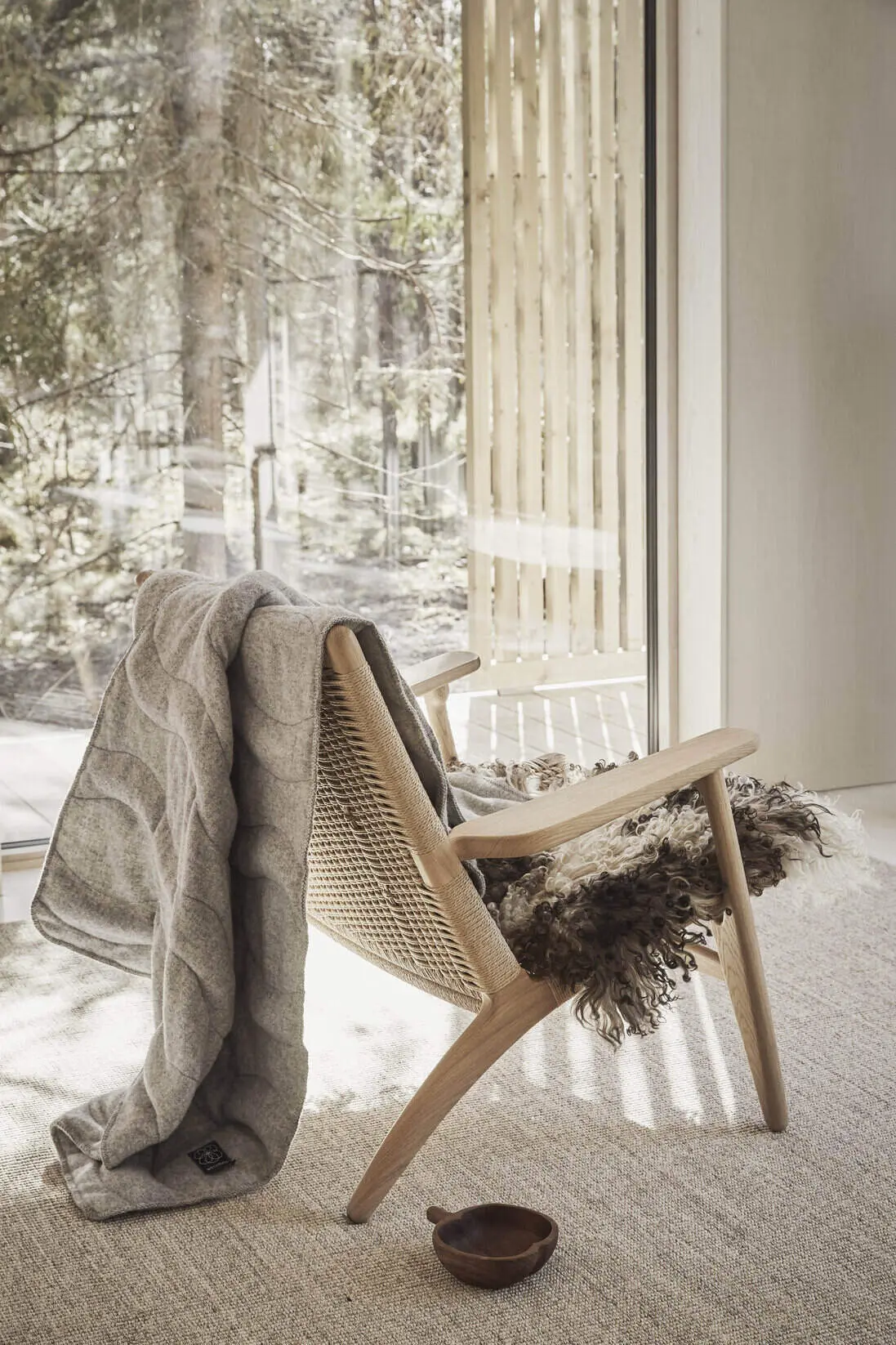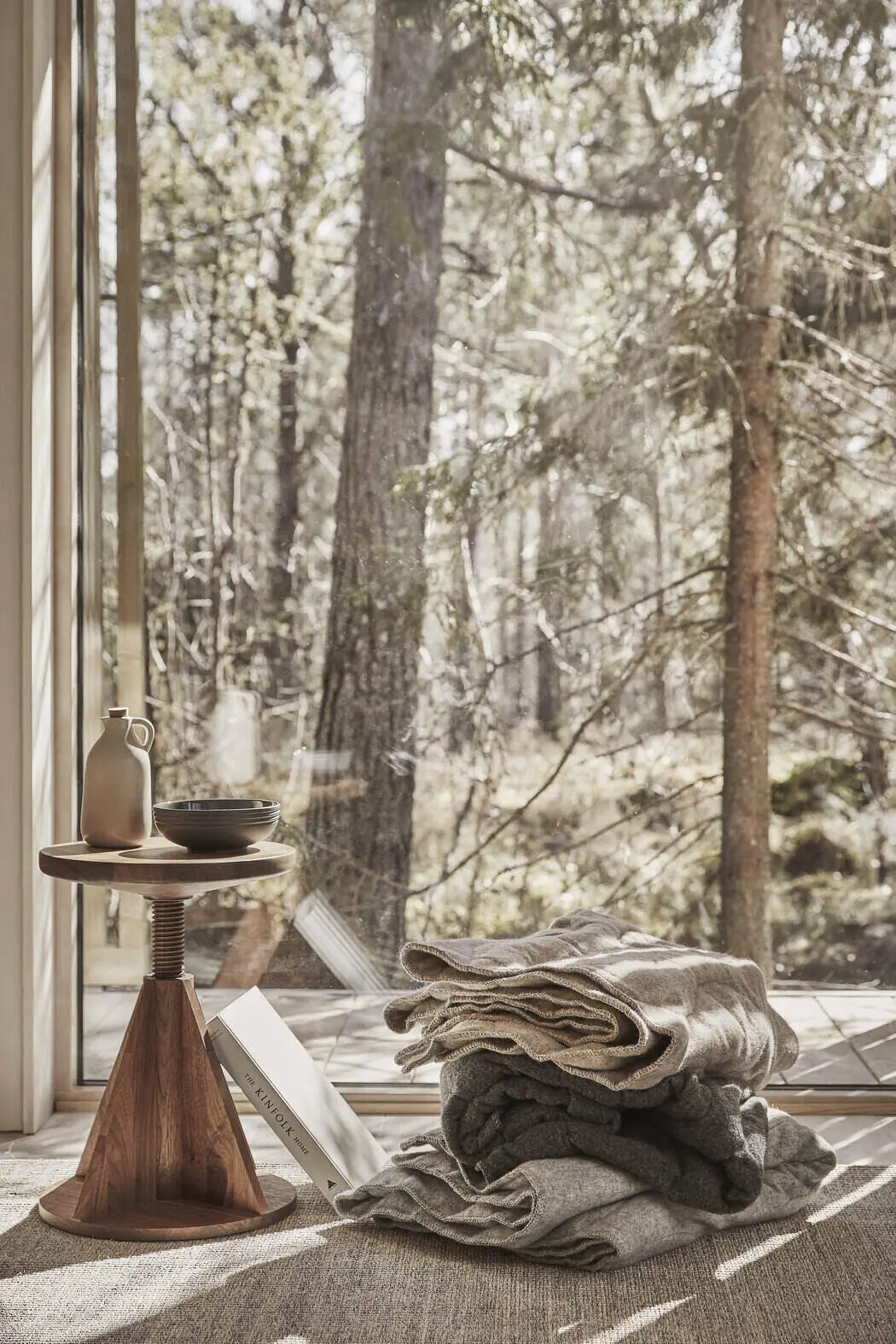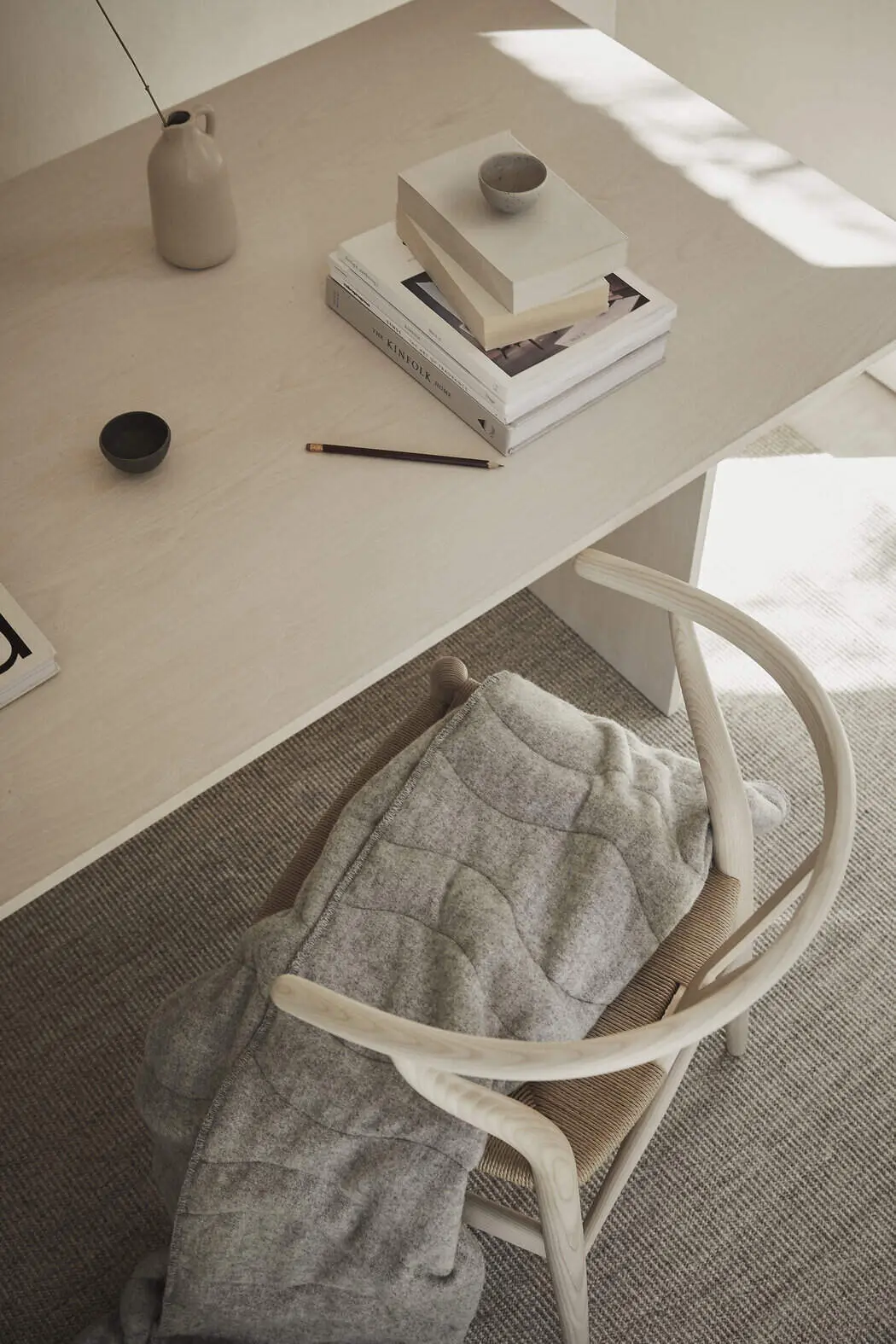Wesomnia’s weighted blankets are the Scandi cure to anxiety
Wesomnia is the Swedish brand specialising in sustainably made weighted blankets, which research suggests provides anxiety relief and a complementary aid to a good night’s sleep.

Wesomnia was founded by psychologist, Ulrika Dehlryd, who led the charge when it came to designing the weighted blankets as a tool to combat challenging topics like stress, anxiety and insomnia.
It specialises in weighted blankets made of sustainable natural materials.
If you don’t know what a weighted blanket is, it’s just like a standard blanket except it’s filled with materials such as plastic or glass beads.

This adds up to 35 pounds of extra weight, which is proven to simulate light hands-on pressure that can help calm users and their nervous system.
The weighted blankets from Swedish brand Wesomnia are made of a combination of organic lambswool, free from pesticides and other chemicals, and merino wool from sustainably farmed sheep.
The blanket, manufactured by Klippan Yllefabrik in the south of Sweden, is filled with local grains of wheat which creates the perfect weight for a warm and cosy sensation.
Although weighted blankets don’t offer a universal remedy, Dehlryd is convinced of their positive impact on users.
Here, she explains their recent phenomenon, their positive effects and the design process…

Can you start by telling us a little about your background and how this led to Wesomnia being founded?
Ulrika Dehlryd: “I’ve been a clinical psychologist for over 20 years, mainly helping adults. As a clinician, you meet people suffering from stress, anxiety disorders, and depression every day.
Sleep-related problems are almost always addressed as part of the therapy.
Not getting enough sleep over an extended period negatively impacts your health, how you function on a day-to-day basis, and your quality of life.
Getting enough sleep is vital for all humans, and many turn to sleeping pills to solve their sleeping problems.
In my work, I also meet a lot of people who prefer to get a good night’s sleep more naturally, for example, through therapy, mindfulness, etc.
Having worked with both individual and group sleep therapy, I’ve found complementary ways of working with sleeping disorders.
This eventually led to fulfilling my long-term entrepreneurial dream of starting a company, which promised more freedom and an outlet for my creative side.
Enter Wesomnia, now a family-run company where my youngest daughter and partner are very much involved.”

How does a weighted blanket work to calm feelings of anxiety? Is there a particular technique for using a weighted blanket, and what is its science?
Ulrika Dehlryd: “A weighted blanket alone cannot be considered a treatment per se, but it can have positive effects, such as helping you to fall asleep faster or as a tool to “ground yourself” during the day.
In other words, it can help you to reduce your stress level during the day, something you will also benefit from when you go to bed at night.
The theory behind weighted blankets is that they can be experienced as physical touch, which contributes to the formation of oxytocin, a hormone also known as the “peace and quiet hormone.”
It is not entirely clear whether it is the physical touch on your skin and/or the cognition of safety when you are under the weighted blanket that produces the hormone.
The important thing is that it seems to work for quite a few of us, functioning like a “warm hug” that calms us down and relaxes us.
There is no special technique for using the blanket; some like to cover their whole body, and others feel covering part of the body is enough.
When it comes to what weight you ought to choose, that is very subjective.
It depends on how you intend to use your weighted blanket. If you want to move it around the house, choose the smaller, lighter one.
Or if you think you will mainly use your weighted blanket in bed at night, maybe the big one is a better choice.
Also, common sense applies here. It should always be easy to remove the blanket from your body. Weighted blankets are not for tiny tots or weak people.”
The hugging chair: Alexia Audrain talks us through her OTO chair design, which aims to help people with autism self-soothe when they are experiencing sensory overload.


Weighted blankets and other weighted accessories have become extremely popular as a calming technique for children with sensory processing disorders, autistic spectrum disorders, and even ADHD. Why is that?
Ulrika Dehlryd: “Sleeping disorders seem to be more common among children with neuropsychiatric diagnoses, such as ADHD, than among those without a diagnosis.
Since sleep loss appears to impact a person’s capacity for performance and access to energetic resources, finding a way to improve sleep for this group is paramount.
A solid daily routine is also essential for this group of children. However, if they suffer from insufficient sleep and a lack of energy, it is difficult to provide them with the structured environment they need.
Of course, as with everything, weighted blankets are not for everyone but many seem to benefit from the effect of the weight on the body.”

Your weighted blanket features sustainable, natural, and soft materials. How did you source them?
Ulrika Dehlryd: “I experimented with many different wool materials from Klippan and ended up with the one we use today.
It is a beautiful blend of 60% merino and 40% lambswool, making it soft on your skin and strong enough to hold the stuffing.
In terms of blanket stuffing, I also tried many different kinds, such as sand and glass pebbles.
Finally, we ended up talking to a family-run company in Sweden that has been making wheat warmers for 25 years.
They have a lot of experience and are quality-oriented, so getting them to fill our blankets by hand with wheat felt like a natural choice.
The combination of wool and wheat is ideal; both materials “breathe,” so when it is cold, they keep in the warmth, and when it is hot (you can also use them in the summer), they adjust and regulate the temperature naturally.
The wave-like pattern is a result of my thoughts on function and design. I pictured comforting arms holding us.
And while the pressure on the body did not have to be completely even, it needed to be constant.
I think the wave pattern is lovely to look at – calming, familiar and ubiquitous in nature.”

One thing that stands out is their handcrafted look and feel. Was this an intentional choice?
Ulrika Dehlryd: “My vision was to make something meaningful and with a purpose. I wanted the blanket to function at least as well as the ones in hospitals.
But to also look nice and made using materials and a process that I could stand behind.
I wanted to make something that I would like to have and use in my own home! The handcrafted look and feel stems from my choice of natural materials and aesthetics.
Also, I wanted to stay in close contact with and meet all the people involved in the production process to make sure I felt ok about it.
At one point, we had a blanket that took over 50 hours to make.
It was very beautiful, but nothing you could produce in more significant quantities.”
COVID-19 has had a huge impact on our mental wellbeing and it is crucial that we tackle these challenges today: Design for mental health – Can these 8 products help cure anxiety?
As well as the classic weighted blanket, you have designed wheat warmers—does the future of Wesomnia involve a wider collection of sleep accessories?
Ulrika Dehlryd: “Interesting to get that question right now! Over the past couple of weeks, my daughter and I have been talking quite a lot about where we want to take Wesomnia.
When we started out, our weighted blankets were first picked up by design magazines/influencers as design pieces, which was both a little surprising and flattering.

I had been very picky about the materials, the look and feel of the product, and the production chain, so looking back, maybe it wasn’t that surprising.
A challenge for me was to understand where my weighted blanket belonged.
At this point, I stumbled across the concept of “neurodesign,” which I really feel covers what we are doing rather well.
Yes, Wesomnia has more products in the pipeline. So far, I would say that they are all connected to health and sleep.
Going forward, I believe that what we have in mind is different types of lifestyle items.
Both of us think that neurodesign and lifestyle are a good fit with what we enjoy, find interesting and challenging.”







